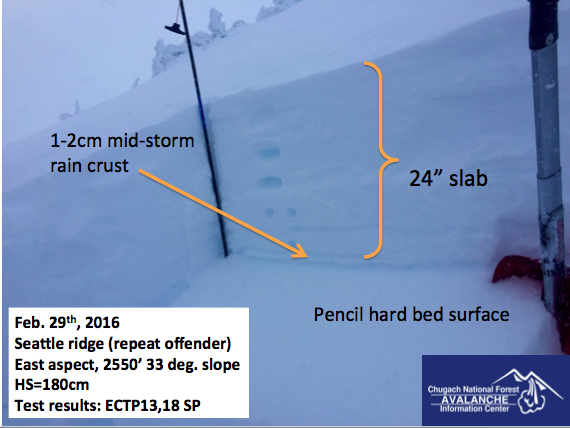Turnagain Pass
|
|
Avalanche Danger in the Alpine and treeline elevations (above 1,000′) is CONSIDERABLE today given a multitude of different avalanche problems currently present. As this 9-day storm begins to wrap up today we have very little data from the alpine. What data we do have, points toward a snowpack with some potential mid-storm weaknesses that needs time to adapt to an enormous load of snow and water weight (11 €+ water over 9 days). Very cautious route finding and conservative decision-making will be essential today if venturing into the mountains. The sun is expected to make an appearance today and its worth noting that direct sun and warming temperatures will compound these avalanche problems listed below.
The danger is MODERATE below 1,000′ where debris from an avalanche above could run in steep terrain.
Elevated caution and a conservative mindset is recommended in the Summit Lake area where a variety of avalanche concerns also exist. See Saturday’s Summit Lake Summary and click HERE for recent observations.



